 W
WThis is a list of notable writers who are Indigenous peoples of the Americas.
 W
WWilliam Penn Adair (1830–1880) was a leader of the Cherokee Nation, an attorney who served in political office both before and after the American Civil War, and as a justice of their court. He entered the Confederate States Army on the promise that the Confederacy would support an Indian state if it won the war, and achieved the rank of colonel.
 W
WStephanie Adams was an American model, author, and murderer. She was the November 1992 Playboy Playmate.
 W
WRichard Aitson is a Kiowa-Kiowa Apache bead artist, curator, and poet from Oklahoma.
 W
WClarence Lee Alexander is a former Grand Chief of the Gwich'in of Alaska. He was 1st Chief of Fort Yukon from 1980-1994. He was raised at "Shoo Taii," the "Happy Hill," which is also known by the name "Alexander Village". Alexander Village is approximately 20 miles north of Fort Yukon. He co-authored the Gwich'in Dictionary with his wife, Virginia E. Alexander.He has five children and had 8 brothers and sisters. The majority of his family have moved to Fairbanks, Alaska except for one son, his children, and his wife.
 W
WSherman Joseph Alexie Jr. is a Spokane-Coeur d'Alene-Native American novelist, short story writer, poet, and filmmaker. His writings draw on his experiences as an Indigenous American with ancestry from several tribes. He grew up on the Spokane Indian Reservation and now lives in Seattle, Washington.
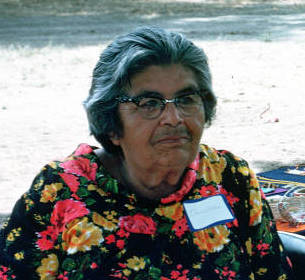 W
WElsie Comanche Allen was a Native American Pomo basket weaver from the Cloverdale Rancheria of Pomo Indians of California in Northern California, significant as for historically categorizing and teaching Californian Indian basket patterns and techniques and sustaining traditional Pomo basketry as an art form.
 W
WPaula Gunn Allen was a Native American poet, literary critic, activist, professor, and novelist. Of mixed-race European-American, Native American, and Arab-American descent, she identified with her mother's people, the Laguna Pueblo and childhood years. She drew from its oral traditions for her fiction poetry and also wrote numerous essays on its themes. She edited four collections of Native American traditional stories and contemporary works and wrote two biographies of Native American women.
 W
WDennis Banks was a Native American activist, teacher, and author. He was a longtime leader of the American Indian Movement, which he co-founded in Minneapolis, Minnesota in 1968 to represent urban Indians.
 W
WAndrew Jackson Blackbird was an Odawa (Ottawa) tribe leader and historian. He was author of the 1887 book, History of the Ottawa and Chippewa Indians of Michigan.
 W
WTah-won-ne-ahs or Thaonawyuthe, known in English as either Governor Blacksnake or Chainbreaker, was a Seneca war chief and leader. Along with other Iroquois war chiefs, he led warriors to fight on the side of the British during the American Revolutionary War from 1777 to 1783. He was prominent for his role at the Battle of Oriskany, in which the Loyalist and allied forces ambushed a force of rebels. After the war he supported his maternal uncle Handsome Lake, as a prominent religious leader. Governor Blacksnake allied with the United States in the War of 1812 and later encouraged some accommodation to European-American settlers, allowing missionaries and teachers on the Seneca reservation.
 W
WWin Blevins is an American author of fiction and non-fiction. He has written many books about the western mountain trappers, and is known for his "mastery of western lore." His notable works include Stone Song, So Wild a Dream, and Dictionary of the American West. According to WorldCat, the Dictionary of the American West is held in 728 libraries. Blevins has won numerous awards, including being named winner of the Owen Wister Award for Lifetime Achievement in writing literature of the West, being selected for the Western Writers Hall of Fame, being twice named 'Writer of the Year' by Wordcraft Circle of Native Writers, and winning two Spur Awards for Novel of the West.
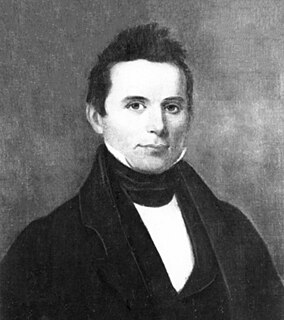 W
WElias Boudinot was a writer, newspaper editor, and leader of the Cherokee Nation. He was a member of a prominent family, and was born and grew up in present-day Georgia. His Cherokee name reportedly means either 'male deer' or 'turkey.' Born to parents of mixed Cherokee and European ancestry and educated at a missionary school in Connecticut, Boudinot became one of several leaders who believed that acculturation was critical to Cherokee survival. He was influential in the period of removal to Indian Territory.
 W
WWaheenee, also referred to as the Buffalo Bird Woman was a traditional Hidatsa woman who lived on the Fort Berthold Reservation in North Dakota. Her Hidatsa name was Waheenee, though she was also called Maaxiiriwia. She was known for maintaining the traditional lifestyle of the Hidatsa, including gardening, cooking, and household tasks. She passed on the traditional ways of her culture and oral tradition through interviews with Gilbert Wilson, in which she described her own experience and the lives and work of Hidatsa women.
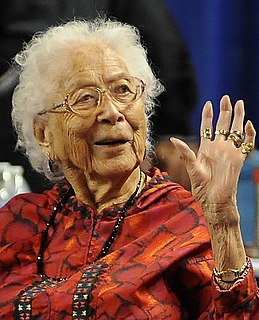 W
WPoldine Demoski Carlo was an American author and an elder of the Koyukon Alaskan Athabaskans, native people of Alaska.
 W
WMark R. Charles is a Native American activist, public speaker, consultant, and author on Native American issues, as well as a journalist, blogger, Reformed pastor, and computer programmer. He was an independent candidate for President of the United States in the 2020 United States presidential election.
 W
WMark Coggins is the Choctaw and American author of a series of novels featuring private eye protagonist August Riordan.
 W
WThomas Commuck was an American composer and historian. His 1845 collection Indian Melodies has been described as the first published musical work by a Native American.
 W
WSteven Conliff was a Midwestern-based Native American writer, historian, social satirist, alternative-media publisher and political activist in the 1960s and 1970s.
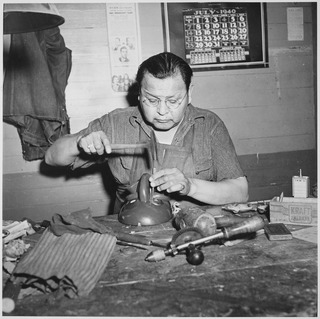 W
WJesse J. Cornplanter was an actor, artist, author, craftsman, Seneca Faithkeeper and World War I decorated veteran. The last male descendant of Cornplanter, an important 18th-century Haudenosaunee leader and war chief, his Seneca name was Hayonhwonhish. He illustrated several books about Seneca and Iroquois life. Jesse Cornplanter wrote and illustrated Legends of the Longhouse (1938), which records many Iroquois traditional stories. Cornplanter was also the first Native American to play a lead in a feature film titled Hiawatha, which was released in 1913 and a year before the notable Western The Squaw Man.
 W
WDavid Cusick was a Tuscarora artist and the author of David Cusick’s Sketches of Ancient History of the Six Nations (1828). This is an early account of Native American history and myth, written and published in English by a Native American.
 W
WNora Marks Keixwnéi Dauenhauer was a Tlingit poet, short-story writer, and Tlingit language scholar from Alaska. She won an American Book Award for Russians in Tlingit America: The Battles of Sitka, 1802 And 1804. Nora was Alaska State Writer Laureate from 2012 - 2014.
 W
WNora Thompson Dean, also known as Weenjipahkihelexkwe, which translates as "Touching Leaves Woman" in Unami, was a member of the Delaware Tribe of Indians. As a Lenape traditionalist and one of the last fluent speakers of the southern Unami dialect of the Lenape language, she was an influential mentor to younger tribal members and is widely cited in scholarship on Lenape culture.
 W
WElla Cara Deloria, also called Aŋpétu Wašté Wiŋ, was an educator, anthropologist, ethnographer, linguist, and novelist of European American and Native American ancestry. She recorded Native American oral history and legends, and she also contributed to the study of Native American languages. According to Cotera (2008), Deloria was "a pre-eminent expert on D/L/Nakota cultural religious, and linguistic practices." In the 1940s, Deloria wrote a novel titled Waterlily, which was published in 1988, and republished in 2009.
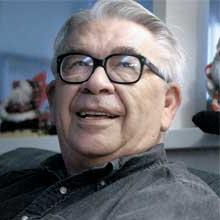 W
WVine Victor Deloria Jr. was an author, theologian, historian, and activist. He was widely known for his book Custer Died for Your Sins: An Indian Manifesto (1969), which helped attract national attention to Native American issues in the same year as the Alcatraz-Red Power Movement. From 1964 to 1967, he served as executive director of the National Congress of American Indians, increasing tribal membership from 19 to 156. Beginning in 1977, he was a board member of the National Museum of the American Indian, which now has buildings in both New York City and in Washington, DC, on the Mall.
 W
WElleanor Eldridge was an African American/Native American entrepreneur and memoirist from Rhode Island. She is best known for the Memoirs of Elleanor Eldridge, which was co-authored with Frances Harriet Whipple Green McDougall. Another edition was published in 1840, and still another in 1842. This volume of a 128 pages was published for the purpose of enabling the subject of it to repurchase some property of which she had been perhaps legally, but at all events unfairly, deprived.
 W
WL. Frank is the nom d'arte of L. Frank Manriquez, a Tongva-Ajachmem artist, writer, tribal scholar, cartoonist, and indigenous language activist. She lives and works in Santa Rosa, California.
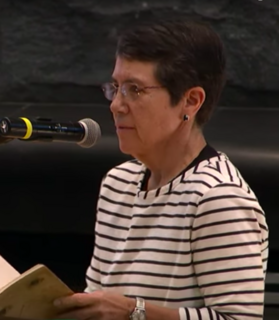 W
WJanice Gould (1949—2019) was a Koyangk'auwi Maidu writer and scholar. She was the author of Beneath My Heart, Earthquake Weather and co-editor with Dean Rader of Speak to Me Words: Essays on Contemporary American Indian Poetry. Her book Doubters and Dreamers (2011) was a finalist for the Colorado Book Award and the Binghamton University Milt Kessler Poetry Book Award.
 W
WErnestine Hayes is a Tlingit writer and professor in Juneau, Alaska. (Tlingit) memoirist. Hayes belongs to the Kaagwaantaan, or wolf clan, on the Eagle side of the Tlingit nation.
 W
WHenry Perley was an Algonquin actor, entertainer, wilderness guide, and author. He is commonly known by his pseudonym, Chief Henry Red Eagle. Perley became the youngest licensed guide in the state of Maine at the age of 14. He attended Greenville High School, and during that time earned money by making snowshoes and working in lumber yards. He was not only the first full-blooded Indian to graduate from Greenville High School, but was also class president and graduated valedictorian of his class of 1902.
 W
WDarrell Robes Kipp was a Native American educator, documentary filmmaker and historian. Kipp was an enrolled member of the Blackfeet Nation in Montana, and was instrumental in teaching and preserving the Blackfoot language as the Director of the Piegan Institute.
 W
WFrancis La Flesche was the first professional Native American ethnologist; he worked with the Smithsonian Institution. He specialized in Omaha and Osage cultures. Working closely as a translator and researcher with the anthropologist Alice C. Fletcher, La Flesche wrote several articles and a book on the Omaha, plus more numerous works on the Osage. He made valuable original recordings of their traditional songs and chants. Beginning in 1908, he collaborated with American composer Charles Wakefield Cadman to develop an opera, Da O Ma (1912), based on his stories of Omaha life, but it was never produced. A collection of La Flesche's stories was published posthumously in 1998.
 W
WSusette La Flesche, later Susette LaFlesche Tibbles and also called Inshata Theumba, meaning "Bright Eyes" (1854–1903), was a well-known Native American writer, lecturer, interpreter, and artist of the Omaha tribe in Nebraska. La Flesche was a progressive who was a spokesperson for Native American rights. She was of Ponca, Iowa, French, and Anglo-American ancestry. In 1983, she was inducted into the Nebraska Hall of Fame. In 1994, she was inducted into the National Women's Hall of Fame.
 W
WErnie LaPointe is a great-grandson of Hunkpapa Lakota chief, Sitting Bull. He is a Sun Dancer, Native American author, orator, and president and founder of the Sitting Bull Family Foundation (SBFF). The documentary Sitting Bull's Voice recounts LaPointe's journey from childhood through struggles overcoming alcohol and marijuana use related to PTSD while homeless, the embracement of his culture and the spiritual ways of his ancestors, to his quest to become an authoritative voice for his great-grandfather. LaPointe lives the traditional way of the Lakota, following the rules of the sacred pipe. He resides in Rapid City, South Dakota with his wife Sonja.
 W
WDonna M. Loring is an author, broadcaster, and former Senior Advisor on Tribal Affairs to Janet Mills, the governor of Maine.
 W
WJoseph Medicine Crow was a Native American writer, historian and war chief of the Crow Nation. His writings on Native American history and reservation culture are considered seminal works, but he is best known for his writings and lectures concerning the Battle of the Little Bighorn of 1876.
 W
WMildred "Millie" Noble was an American writer and Native American activist. Noble helped to found the Boston Indian Council, which is now known as the North American Indian Center of Boston.
 W
WLouis Oliver, also known as Little Coon or Wotkoce Okisce, was an American poet of the Muscogee (Creek) people. His poetry combines themes of Creek folklore with an examination of intellectualism in the context of the Creek nation.
 W
WJohn Milton Oskison (1874–1947) was a Native American author, editor and journalist. His fiction focused on the culture clash that mixed-bloods like himself faced.
 W
WArthur Caswell Parker was an American archaeologist, historian, folklorist, museologist and noted authority on American Indian culture. Of Seneca and Scots-English descent, he was director of the Rochester Museum of Arts and Sciences from 1924 to 1945, when he developed its holdings and research into numerous disciplines for the Genesee Region. He was an honorary trustee of the New York State Historical Association. In 1935 he was elected first president of the Society for American Archaeology.
 W
WLeonard Peltier is an American activist and convicted murderer. An activist for Native American civil rights and an enrolled member of the Turtle Mountain Chippewa, he joined the American Indian Movement in 1972. Since 1977, he has been imprisoned for the 1975 murders of two FBI agents at Pine Ridge Indian Reservation. He is of Lakota, Dakota and French heritage.
 W
WLawrence "Pun" Plamondon is a former 1960s left-wing activist who helped found the White Panther Party. He was the first hippie to be listed on the FBI's Ten Most Wanted Fugitives list.
 W
WSimon Pokagon was a member of the Pokagon Band of Potawatomi Indians, an author, and a Native American advocate. He was born near Bertrand in southwest Michigan Territory and died on January 28, 1899 in Hartford, Michigan. Dubbed the "Red Man's Longfellow" by literary fans, Pokagon was often called the "Hereditary and Last Chief" of the tribe by the press. He was a son of his tribe's patriarch, Leopold Pokagon.
 W
WLawney L. Reyes (Sin-Aikst) is an American Indian artist, curator and memoirist based in Seattle, Washington.
 W
WWilliam Penn Adair Rogers was an American stage and film actor, vaudeville performer, cowboy, humorist, newspaper columnist, and social commentator from Oklahoma. He was a Cherokee citizen born in the Cherokee Nation, Indian Territory.
 W
WCharles Norman Shay is a Penobscot tribal elder, writer, and decorated veteran of both World War II and the Korean War. Along with a Bronze Star and Silver Star, Shay was also awarded the Legion d'Honneur, making him the first Native American in Maine with the distinction of French chevalier. He was instrumental in the re-publishing of a book by his own grandfather, Joseph Nicolar: The Life and Traditions of the Red Man, originally published in 1893. He has recently written an autobiography, Project Omaha Beach: The Life and Military Service of a Penobscot Indian Elder that details his time abroad in the military. Shay is also a direct descendant of Jean-Vincent d'Abbadie de Saint-Castin.
 W
WPaul Chaat Smith (Comanche) is an author and an associate curator at the National Museum of the American Indian. He writes and lectures frequently on American Indian art and politics.
 W
WVirginia Alice Stroud is a Cherokee-Muscogee Creek painter from Oklahoma. She is an enrolled member of the United Keetoowah Band of Cherokee Indians.
 W
WGladys Iola Tantaquidgeon was a Mohegan medicine woman, anthropologist, author, tribal council member, and elder based in Connecticut.
 W
WCharlene Teters is a Native American artist, educator, and lecturer. Her paintings and art installations have been featured in over 21 major exhibitions, commissions, and collections. She is a member of the Spokane Tribe, and her Spokane name is Slum Tah. She was born and raised in Spokane, Washington, near the Spokane Indian Reservation.
 W
WLucy Thompson (1853-1932) was a Native American author known for her book To the American Indian: Reminiscences of a Yurok Woman. Written in 1916, the book is intended to preserve her people's stories. The book received the American Book Award decades later in 1992. Thompson was born in the Klamath River village of Pecwan. Outside the book she is known to have come from "Yurok aristocracy" and to be married to Milton "Jim" Thompson. She intended to tell the stories of her people that were not being told by others, and to make others better understand her people and perspective, although she also criticized "whites" for practices like over-fishing. Thompson expressed that violence towards indigenous Californians were deliberate acts of genocide and she expressed concern for the continued stewardship of Klamath River salmon.
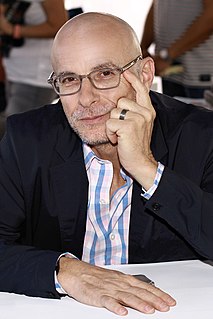 W
WDavid Treuer (Ojibwe) is an American writer, critic and academic. As of 2019, he had published seven books; his work published in 2006 was noted as among the best of the year by several major publications. He published a book of essays in 2006 on Native American fiction that stirred controversy by criticizing major writers of the tradition and concluding, "Native American fiction does not exist."
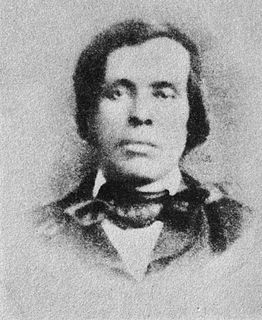 W
WWilliam Whipple Warren was an historian, interpreter, and legislator in the Minnesota Territory. The son of Lyman Marcus Warren, an American fur trader and Mary Cadotte, the Ojibwe-Metis daughter of fur trader Michel Cadotte, he was of Ojibwe and French descent. William lived in two cultures, because his father was white, he was not considered Ojibwe, but an Ojibwe "relative", because in the Ojibwe patrilineal culture, inheritance and property were passed through the paternal line. His mother was Ojibwe and he learned her culture from her family. He is the first historian of the Ojibwe people in the European tradition.
 W
WSummer Wesley, who also goes by Chahta Summer, is an attorney, writer, and activist from Oklahoma. She is a member of the Choctaw Nation.
 W
WAlbert White Hat was a teacher of the Lakota language, and an activist for Sičháŋǧu Lakȟóta traditional culture. He translated the Lakota language for Hollywood movies, including the 1990 movie Dances with Wolves, and created a modern Lakota orthography and textbook.
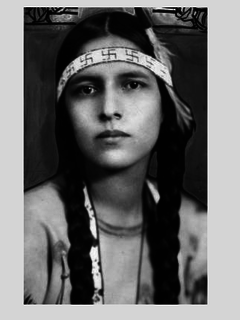 W
WRosebud Yellow Robe (Lacotawin) was a Native American folklorist, educator and author. Rosebud was influenced by her father Chauncey Yellow Robe, and used storytelling, performance and books to introduce generations of children to Native American folklore and culture. Rosebud was a public celebrity to thousands of children who visited the Indian Village at Jones Beach, New York, every summer from 1930 to 1950, and known for her beauty, enthusiasm and intelligence. From the late 1930s through the 1950s, Yellow Robe was a broadcast celebrity with the CBS Broadcast Center in New York City and appeared as a regular on NBC children's programs. In later years, Rosebud continued her storytelling and lectures at the American Museum of Natural History and the Donnell Library of New York. In 1994, Yellow Robe's career as an educator was honored in a performance of "Rosebud's Song" by the National Dance Institute at New York City's Madison Square Garden.
 W
WAlfred Young Man, Ph.D. or Kiyugimah is a Cree artist, writer, educator, and an enrolled member of the Chippewa-Cree tribe located on the Rocky Boy Indian Reservation, Montana, US. His Montana birth certificate lists him as being 13/16th Cree by blood-quantum, his full sister, Shirley, is listed as 16/16ths. He is a former Department Head (2007–2010) of Indian Fine Arts at the First Nations University of Canada in Regina, Saskatchewan and former Chair (1999–2007) of Native American Studies, University of Lethbridge, Lethbridge, Alberta, Canada. He is Professor Emeritus at the University of Lethbridge and University of Regina.